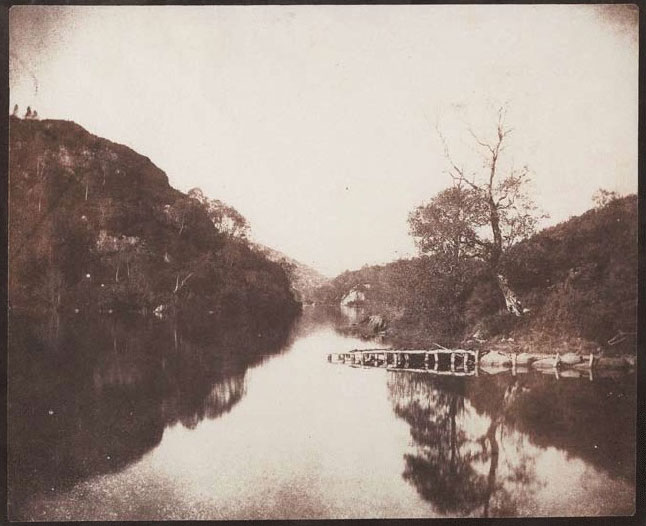- Relief printing
- Intaglio and planographic printing
- Color printing
- Bits and pieces
- Early photography in silver
- Non-silver processes
- Modern photography
- Color notes
- Color photography
- Photography in ink: relief and intaglio printing
- Photography in ink: planographic printing
- Digital processes
- Where do we go from here?
Salted-paper prints

Salted-paper print from a calotype. William Henry Fox Talbot. Loch Katrine. 1844. 6 7/8 x 8 5/16" (17.4 x 21.1 cm). The Museum of Modern Art, New York. The Family of Man Fund.
The silver compound most commonly used in early photography was silver chloride, which involves an interesting technical problem in that it is completely insoluble in water. You cannot make a solution of silver chloride and coat it on a sheet of paper, no matter how hard you try. The way around this problem was to coat the paper with a salt solution—perhaps even using plain old table salt—that had a small amount of gelatin mixed in as a binder. Once that coating was dry, a second coating, of a solution containing silver nitrate, was put on the sheet.
The moment the silver nitrate and the salt came into contact they produced silver chloride, and because the salt was evenly coated, the silver chloride was as well. This is the origin of the term “salted-paper.” It was possible to apply the salt coating and then dry and store the sheets; the silver nitrate had to be applied shortly before the material was used, since the sensitive paper degraded in a day or so. Virtually all salted-paper prints were toned with gold prior to fixing, which gave them their characteristic reddish-purple color.

